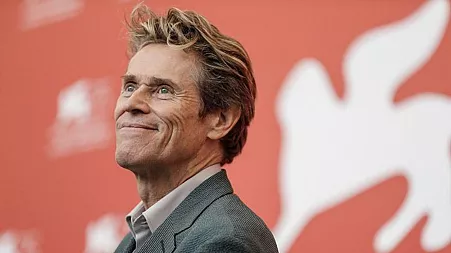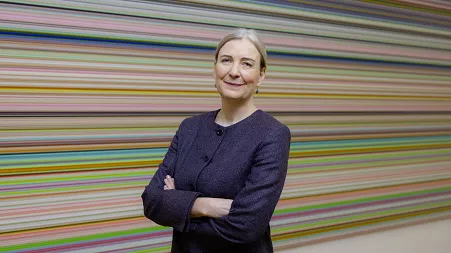“It’s not your grandfather’s mummy.” That’s the mantra producer James Jacks had on his mind during the filming of The Mummy, the 1999 blockbuster starring Brendan Fraser.
It was a pertinent slogan to steer by. After all, Universal had by that point been trying to resurrect the classic monster for more than a decade, leaving behind it a trail of directors and unmade scripts like an old, unravelled bandage. Which is exactly what the eventual writer-director Stephen Sommers didn’t want for his film. “Nobody wants to see a guy wrapped in bandages,” he recalled. “They’re going to laugh at it.”
In the end, they (mostly) didn’t laugh – but they were enthralled. The Mummy – now back in UK cinemas to mark its 25th anniversary – was more Indiana Jones than Boris Karloff. Yet it wasn’t an easy adventure. The production suffered a mini series of Egyptian plagues: snakes, scorpions, and sandstorms that hit the set “like a whirlwind, throwing equipment around,” remembers actor Kevin J O’Connor, who played the sycophantic man-servant Beni to the film’s undead priest Imhotep. “People were jumping anyplace to get away from the sand!”
Critics weren’t entirely spellbound in 1999, and some of the CGI has aged like an entombed corpse, but The Mummy was a blockbuster smash. It gave life to a new franchise and put Rachel Weisz on the Hollywood map. And it has a powerful nostalgia for the now-grown-up children of the millennium.
The original Mummy shuffled out of the tomb in 1932 – the third of Universal’s classic monsters, following Dracula and Frankenstein (1931). By this point, the studio had cracked its monster formula. The Mummy was a retread of the Dracula story starring Frankenstein’s Monster, Boris Karloff, while playing on the media frenzy around the discovery (and curse!) of Tutankhamun’s tomb ten years earlier.
There’s very little monster-in-bandages action in the 1932 film. In that version, the Egyptian priest Imhotep (Karloff) assimilates into modern Cairo, palming himself off as a crinkly-faced oddball. He’s less of a monster than an old romantic, attempting to sacrifice the reincarnation of his lost love (get over it, mate – she’s been gone almost four millennia).
In fact, it was in the 1940 follow-up, The Mummy’s Hand, that the Mummy – played by Tom Tyler – made a habit of shuffling around in bandages. This trend continued when the British studio Hammer Horror brought the Mummy back to life in 1959. Their Mummy was played by Christopher Lee as a towering, rigid, corpse-on-the-rampage, who emerges from a swamp, his bandages stained oily black. It’s the best “classic” Mummy.
Universal attempted to raise the Mummy back once again in the late 1980s. Indeed, horror purists should weep over the Mummies that failed to clamber out of development hell. Night of the Living Dead director George A Romero – godfather of the modern zombie – was attached to the franchise twice. Nightmarish dream-weaver Clive Barker, creator of Hellraiser’s S&M demons, developed a script with Mick Garris. And Joe Dante, director of The Howling and Gremlins, pitched a contemporary spin on the Mummy, from a script by John Sayles. Tantalisingly, there’s an oft-repeated story that Daniel Day-Lewis was in line for the bandages. But it’s likely a bit of Mummy myth as Dante later confirmed that his version would have featured Christopher Lee.
But when Sommers heard that this latest version had fallen through, he reached out to producers James Jacks and Sean Daniel. They, though, were “so sick of The Mummy that they didn’t even hear my pitch and just brought me straight into Universal,” Sommers recalled.
It was an apt time for the return of The Mummy. There had been other classic monster revivals in the Nineties. The Jack Nicholson-starring Wolf (1994) put the Wolf Man into corporate territory – an alpha executive fighting tooth and claw under the moonlight. There was also a gothic revival in films of that era, including Bram Stoker’s Dracula (1992) with Gary Oldman as the Count, and Mary Shelley’s Frankenstein (1994) with Robert De Niro as a stout, lumpy monster.
But Sommers didn’t want to go gothic. “What I proposed was, basically, to do The Mummy as the big event movie,” Sommers said. “I wanted to do an epic, romantic adventure.”
Clearly, the model was 1981’s Raiders of the Lost Ark, with Brendan Fraser in the Indy-like role of Rick O’Connell, a roguish swashbuckler who knows the way to the mysterious City of the Dead. “No one actually said it,” recalls Simon Crane, the film’s stunt coordinator, about its Indy-ness. “But that’s probably what was going through everyone’s mind.”
The Mummy was called a remake of the Karloff film – it really isn’t, though it does borrow bits and pieces from classic Mummy movies. In the 1999 version, the high priest Imhotep (Arnold Vosloo) – who’s prone to philandering and black magic – is condemned to being mummified alive. Three-thousand years later, Evelyn (Rachel Weisz), a klutzy-but-delectable librarian, accidentally awakens him during a gold rush on Egyptian treasures. Though he’s just a corpse at first, Imhotep replenishes his body by pilfering the organs of obnoxious American treasure hunters and plans to sacrifice Evelyn in a convoluted plot to resurrect his dead girlfriend. Fraser’s Rick and his boozy chancer sidekick, Johnathan (John Hannah), lead the rescue.
Brendan Fraser was Sommers’s first choice – a strapping six-footer with boys-own-adventure charm and square-jawed comedy chops. And he wasn’t afraid of the rough stuff. “He was really game,” says Crane, who choreographed the action.
In one scene, O’Connell is set to be hanged in an Egyptian prison. Sommers and Fraser have both recounted how Fraser pulled the noose too tight and choked himself unconscious. “I remember seeing the camera start to pan around, and then it was like a black iris at the end of a silent film,” Fraser said. “I regained consciousness, and one of the EMTs was saying my name. There was gravel in my ear and sh–t really hurt.”
But Simon Crane pours water on this story. “That’s bullsh–t,” he says. “It was a closed loop, so the knot couldn’t actually tighten at all.”
A stuntman filmed the hanging, Crane remembers. Fraser just filmed the close ups while on his knees, with the noose around his neck. He could push his throat forward into the noose to apply pressure if he chose to, which is what happened. “What he did was turn red in the face,” adds Crane. “I was standing right beside him. As I was in charge of it all – and the safety – I take great umbrage with that bullsh–t.”
As for the Mummy himself, Stephen Sommers knew South African actor Arnold Vosloo was his man as soon as they met. “He’s Shakespearian, he’s serious, he’s very commanding,” Sommers enthused.
Vosloo wanted to play the character not as a monster but as “one of the great romantic figures”. Indeed, his Imhotep has got a more sinister soul than classic Mummies. He’s not a tragic lover-boy, but a murderous adulterer from the start. Once he awakens, there’s barely a bandage in sight: this Mummy is either a rotted corpse, a whirlwind of sand, or a striding, berobed sorcerer – albeit one with a big CGI mouth that spits out bugs.
Sommers was adamant that his Mummy should be computer-generated, working with Industrial Light & Magic to design the monster.
“We really wanted to create something that would be frightening and dangerous, something that you’d never seen before,” VFX supervisor John Berton said. “We wanted to create a photo-realistic living corpse that was obviously not a man in a suit, obviously not an animatronic, and obviously alive.”
Twenty-five years on, the trend is for practical effects nostalgists to bemoan CGI. Yet patchy bits aside, The Mummy mostly holds up – there’s far worse CGI from the period.
In fact, the amount of CGI thrown at the screen may unwrap the mystery of The Mummy’s popularity. It’s a film perfectly of its moment – a big franchise starter and one of that first generation of CGI-powered blockbusters, which heralded computer graphics as the new standard. See the giant wall of sand with Imhotep’s face, or the small army of mummy soldiers, which Fraser fights off Jason and the Argonauts-style. The film developed a lot of CGI tools and techniques that, by the 2000s, have since come to dominate blockbuster cinema.
The original Mummy needed just a solitary shot of Karloff’s wrinkled hand, moving into shot in absolute silence, for its most chilling scare. But the 1999 version, as Sommers said, is not horror. It has moments, though. The fate of one American treasure hunter – having his eyeballs and tongue torn out – is genuinely horrific.
It was perhaps a “gateway to horror” for younger viewers, says actor Kevin J O’Connor. “I remember one little girl saying, ‘It was the most terrifying film I’ve ever seen!’ I thought, ‘Really? Well, here’s the Texas Chainsaw Massacre 2 – try this one!’”
During production, CGI combined with model work, makeup effects, motion capture, and plenty of practical stunts, including a camel race as well as a car chase with plague-ridden zombies clinging on. The camels, though, were not universally popular. “I hate the bloody things,” says Crane, “they can turn around and bite you!”
The Mummy was shot between Shepperton Studios in London and Morocco, which doubled as Egypt. O’Connor’s memory of shooting in Morocco was thinking, “Get me back to London as soon as possible!” The whole crew got sick. As Brendan Fraser recalled, “We got a lot of B12 shots in the ass, whether we wanted them or not.”
Fraser was also told to watch out for a snake with yellow dots. “Because if it bites you, at best, they’ll amputate your limb,” he was warned. Fraser came face-to-face with the yellow dot snake while he peed behind a rock.
On another occasion, a terrified crewmember called on O’Connor for help. “She said, ‘There’s some sort of scorpion or something in my room!’ I thought, ‘Oh great, the only man around is me...’ I went in and, I kid you not, I could hear the clicking of whatever it was on the tiles in the bathroom. Sure enough, it was a scorpion.”
It was an uncomfortable night’s sleep for O’Connor, worrying about what might be crawling around. “I think I tried to sleep on top of the dresser that night...”
Even as Sommers edited the film, he worried that audiences would laugh. The Mummy was never taken quite as seriously as Dracula or Frankenstein’s Monster – too easily replicated on Halloween, with a simple roll of toilet paper, perhaps. Or too easily unravelled, as literally happens in the Goonies-style kids’ horror, The Monster Squad (1987). “See ya’ later, band-aid breath!” one kid shouts as the Mummy unravels into a puff of ancient dust.
Sommers needn’t have worried. Released on May 7 1999, The Mummy made a sphinx-sized $418 million (from a reported budget of $80 million). It even prospered against Star Wars: The Phantom Menace, which opened a week later.
“[The success] came a little bit sideways,” says O’Connor. “People expect Dracula, Frankenstein, or even the Wolfman. But to do The Mummy... that was a little outside of what people expected to come back. It was the right monster.”
Its sequel, The Mummy Returns (2001), was another smash hit, followed by a spin-off, The Scorpion King (2002) – which spawned its own dreadful straight-to-DVD series – and a third Mummy film, The Mummy: Tomb of the Dragon Emperor (2008). Both moderate earners but, ultimately, dreary franchise installments. And it’s hard to imagine much nostalgia for the poorly received 2017 reboot, starring Tom Cruise, which killed Universal’s plans for a shared “Dark Universe” of classic monsters.
The success of The Mummy back in 1999, then, proves that sometimes an idea– even one that’s been resting in a tomb of a few thousand years – comes to life just at the right moment. With Brendan Fraser back on the A-list following his Best Actor Academy Award for The Whale, a fourth film is reportedly in the works. A good Mummy, it seems, rarely stays dead.
The Mummy is in cinemas now
Disclaimer: The copyright of this article belongs to the original author. Reposting this article is solely for the purpose of information dissemination and does not constitute any investment advice. If there is any infringement, please contact us immediately. We will make corrections or deletions as necessary. Thank you.




